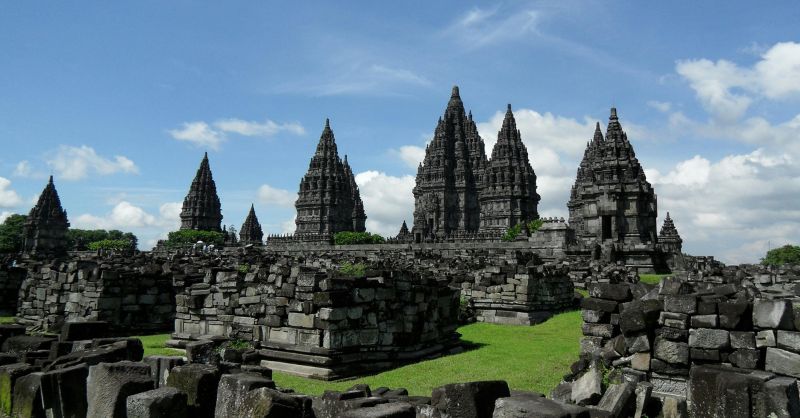
Hinduism, one of the oldest religions in the world, is steadily growing in the United States. Over the last few decades, the number of Hindu temples has increased significantly, transforming the cultural and spiritual landscape of the country.
Currently, there are over 1,450 Hindu temples in the US, with the majority concentrated along the East Coast. New York alone hosts over 1,135 temples, while Texas and Massachusetts have 128 and 127, respectively. From grand architectural marvels to temples housed in renovated buildings, these spaces have become vital centers for religious and cultural practices.
Also a while back, we wrote about a scientist who tried to measure the weight of our soul. It’s an interesting read as well.
Historical growth of Hinduism in the United States
Hinduism’s presence in the United States can be traced back to the late 19th century. A pivotal moment came in 1893 when Swami Vivekananda addressed the World’s Parliament of Religions in Chicago. His powerful message of universal tolerance and spiritual unity resonated deeply with American audiences, igniting a wave of interest in Indian philosophy.
Following his speech, Vivekananda established Vedanta Societies in New York and San Francisco, laying the groundwork for Hinduism’s presence in the US. The Vedanta Society built North America’s first Hindu temple in San Francisco in 1905, marking a significant milestone in the religion’s expansion.
Paramahansa Yogananda and the spread of Yoga
In 1920, Paramahansa Yogananda, often referred to as the “Father of Yoga in the West,” arrived in the US. He founded the Self-Realization Fellowship in Los Angeles, which grew into the most extensive Hindu organization in America by the time of his death in 1952. His teachings on meditation and Kriya Yoga attracted thousands of followers, further embedding Hindu practices in American spiritual life.
Post-1965 immigration boom
The Immigration and Nationality Act of 1965 was a turning point for Hinduism in America. The law facilitated a significant increase in Indian immigration, leading to the establishment of vibrant Hindu communities. These communities, keen on preserving their cultural heritage, began building temples. Notable examples include the Sri Venkateswara Temple in Pittsburgh and the Hindu Temple Society of North America in New York, both consecrated in 1977.
By the 1980s and 1990s, Hindu temples were being constructed in nearly every major metropolitan area, reflecting the growth and integration of Hindu culture in the US.
Contemporary American Hinduism
Today, approximately 3 million Hindus live in the United States, making Hinduism the fourth-largest religion in the country. This number is expected to rise as the Indian diaspora grows and Hindu practices gain popularity among non-Hindu Americans.
Hindu temples in the US serve as more than just places of worship; they are cultural and spiritual hubs. These temples host religious festivals, cultural events, and educational programs, offering a space for Hindu Americans to stay connected to their roots.
Cultural influence of Hinduism in the US
Hinduism’s influence extends beyond temples, permeating various aspects of American culture.
Yoga and meditation
The most visible aspect of Hinduism in America is the widespread practice of yoga and meditation. Over 21 million adults and 1.7 million children practice yoga, and 18 million Americans engage in meditation, many of whom adopt these practices for their mental and physical benefits.
Influence on literature and philosophy
The 19th-century transcendentalists, including Ralph Waldo Emerson, Henry David Thoreau, and Walt Whitman, were profoundly inspired by Hindu texts such as the Bhagavad Gita and the Upanishads. These writers incorporated Hindu philosophical ideas into their work, influencing generations of American thinkers.
Pop culture connections
Hindu concepts have also found their way into Hollywood. For example, the Force in Star Wars mirrors the Hindu concept of Brahman, and the illusion in The Matrix reflects the concept of Maya. These subtle integrations show how deeply Hindu philosophy has seeped into American pop culture.
While the growth of Hinduism in the US is notable, challenges remain. Maintaining traditional practices while adapting to a new cultural environment can be difficult for Hindu communities. Additionally, some temples face financial constraints, relying on donations to sustain their operations.
On the other hand, the increasing visibility of Hindu culture offers an opportunity to promote interfaith dialogue and educate non-Hindus about the religion’s rich history and values.
Notable Hindu temples in the US
- BAPS Shri Swaminarayan Mandir (Atlanta, GA): Known for its stunning marble architecture.
- Sri Venkateswara Temple (Pittsburgh, PA): Among the first temples built by Indian immigrants.
- Malibu Hindu Temple (Calabasas, CA): A serene temple attracting devotees and tourists alike.
- Hindu Temple of Greater Chicago (Lemont, IL): A hub for cultural and spiritual activities.
What we really think about it
The proliferation of Hindu temples in the US is a testament to the resilience and adaptability of Hindu culture. These temples serve as spiritual sanctuaries and cultural bridges, helping Hindu Americans preserve their heritage while fostering greater understanding among diverse communities. As Hinduism continues to grow in America, it enriches the country’s cultural and religious tapestry, promoting values of pluralism, tolerance, and spiritual exploration.
Hinduism’s journey in America, from Swami Vivekananda’s speech in 1893 to the establishment of over 1,450 temples, reflects the profound impact of Indian philosophy and spirituality on the American way of life. As more Americans embrace practices like yoga and meditation, the future of Hinduism in the US looks promising, signaling a deeper integration of this ancient faith into the modern world.



